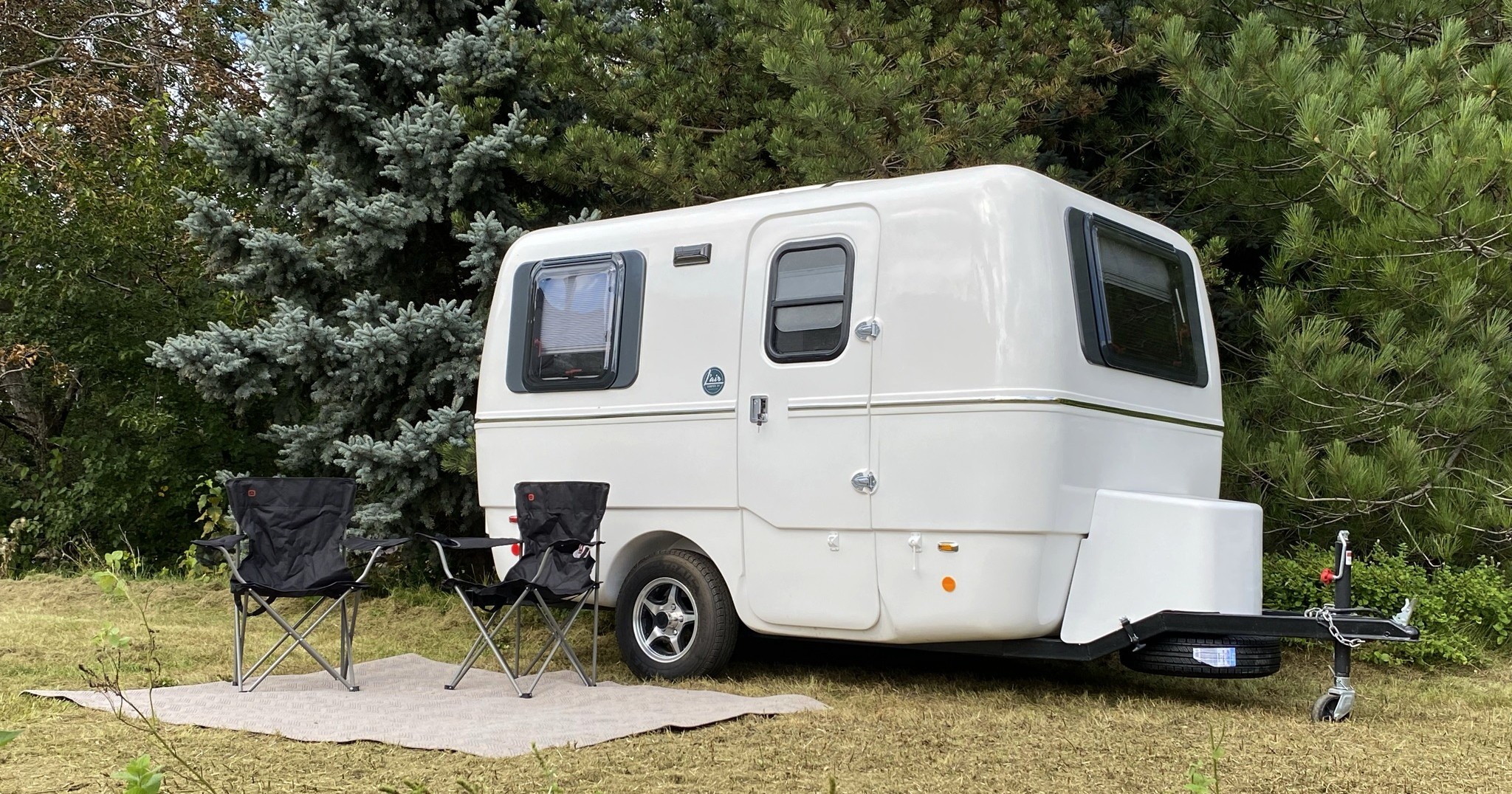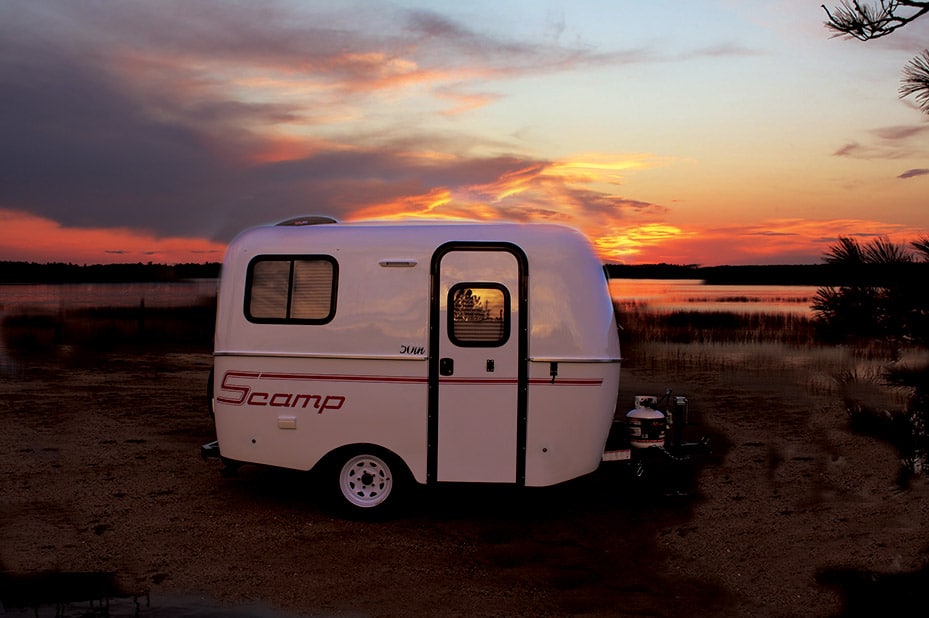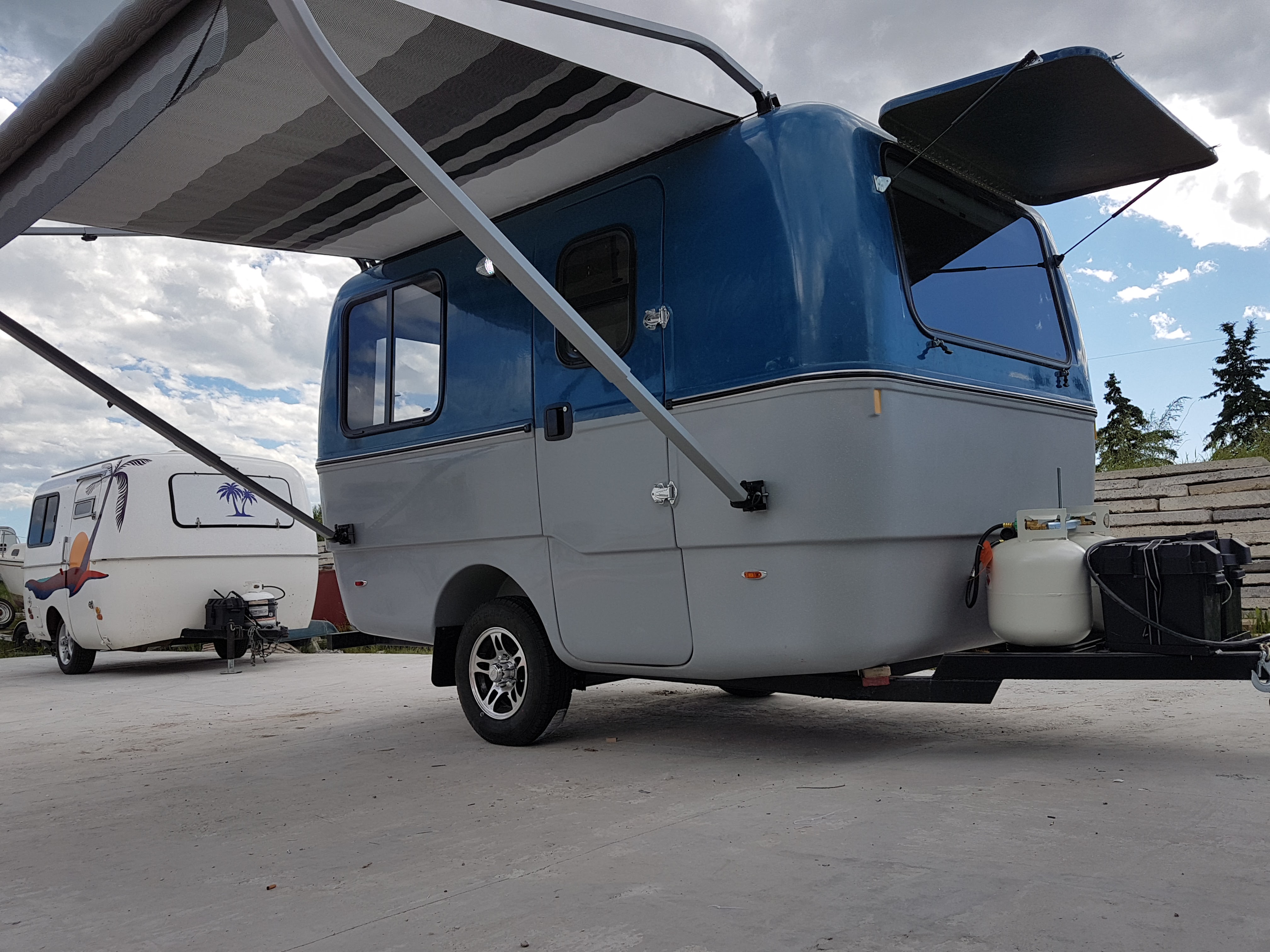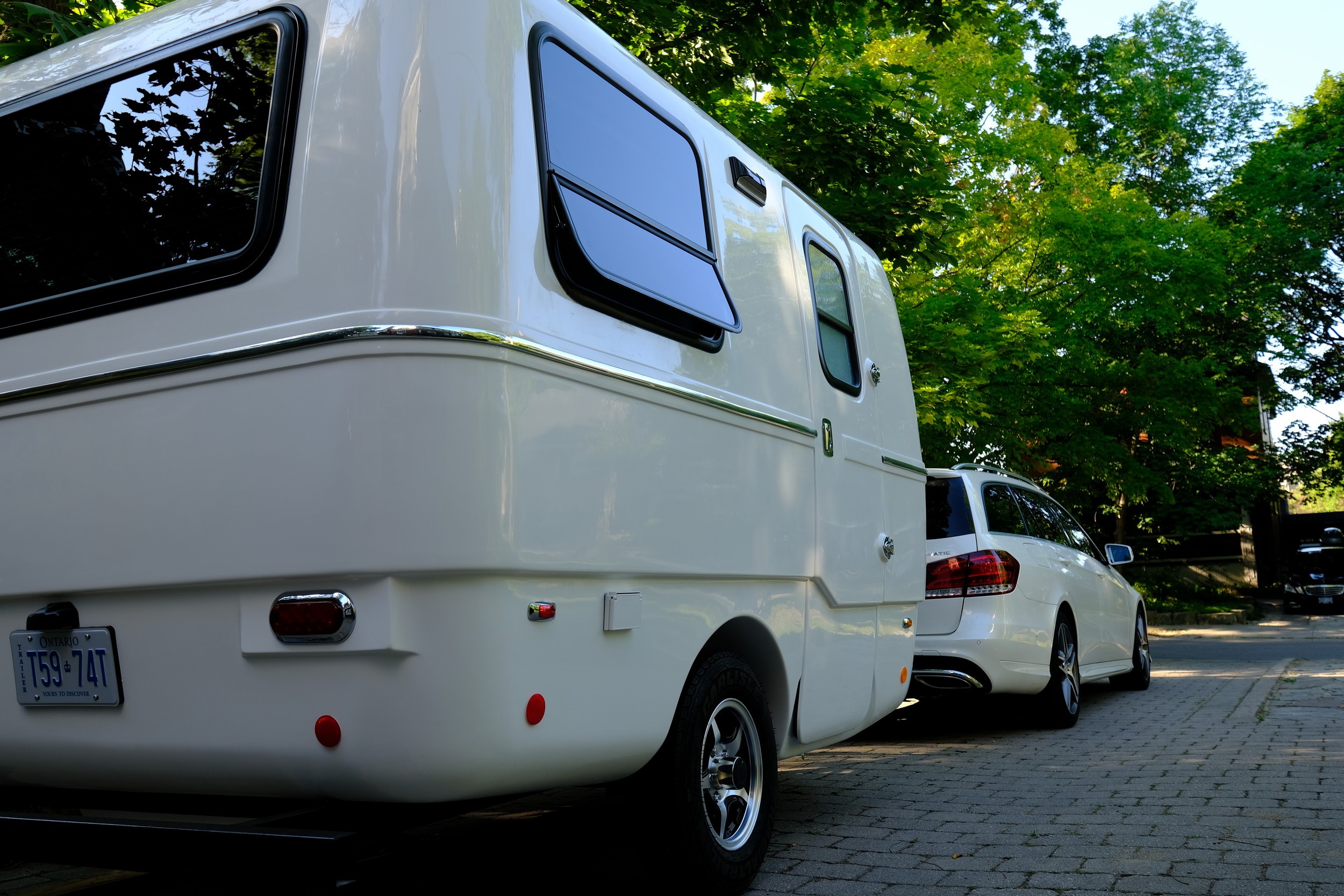I have a real soft spot for fiberglass travel trailers. They look far more distinctive than the boring boxes covered in equally boring swoopy graphics that make up the vast majority of trailers today. But especially appealing to someone like me–an owner of many tiny vehicles–fiberglass campers give you a real living space without a huge weight penalty. For decades, only a few companies made fiberglass campers, but times are changing; the 1970s are back, baby!
Blame Canada
It’s difficult to pinpoint when the first-ever fiberglass camper was built. Tiny RV manufacturers have popped up and disappeared throughout history, many leaving without much of a trace. An early example of a fiberglass camper is the late 1950s Champion Home Builders Co.’s “Little Champ.” Champion claimed a maintenance-free design with its 17-foot camper thanks to its fiberglass exterior.
It would take another decade for fiberglass to really take off with the first Boler. Canadian salesman Ray Olecko was fascinated with fiberglass; according to a letter sent by his daughter to the Boler-Camping blog, Olecko loved tinkering and building things. The letter recalls times when he constructed a tractor and a car from scrap metal. Working with fiberglass, he built a septic tank and slingshots. But it was his frustration with his family getting washed out of tents that inspired his next fiberglass creation. First built in 1968, the 13-foot Boler promised ease of maintenance and a dry weight of just 800 pounds.
Boler was a success and an inspiration for its own competition. In 1971, RV remodeler Duane Eveland was approached by a representative for the U.S. arm of Boler. They struck a deal for Eveland’s company to build Bolers for the U.S. market. Eveland’s Inc. of Minnesota built Bolers for just a short period until Boler American went under in 1972. Determined to keep production going, Eveland and his siblings decided to keep building trailers, and the Scamp camper was born.
Boler also inspired another fiberglass camper brand, Trillium. As RVT’s RV Insight blog notes, Trillium traces its own camper designs back to the Boler. Casita also started operations not long after Boler. These trailers were largely similar, with differences coming in sizing and finish. But you can say that one little trailer kickstarted a whole industry. Fiberglass campers came at just the right time, too. The 1970s brought on challenges like the oil crisis, an economic recession, and major changes in car manufacturing. Cars started getting smaller with emissions equipment choking them out for power. If you bought a compact back then you weren’t looking at towing a huge trailer, but you could tow a fiberglass camper.
Boler-Camping notes that Olecko touted his 800-lb trailers as being so light that they could be towed by a four cylinder car. Unfortunately, the craze wouldn’t last forever, and Trillium closed up shop in 1980. Boler was no longer in the hands of Olecko, and the campers were instead manufactured by Neonex in Canada before it too died in 1988. U-Haul got into fiberglass campers late in the game, building under 2,000 CT13 and V16 campers for rental use during the mid-1980s. The declining popularity of fiberglass campers during the era meant countless companies went under. Scamp and Casita stood out among what few companies survived.
A Comeback
The original Boler and Trillium companies are long gone, but their designs have risen from the dead for modern builds. Team Trillium Manufacturing (TTM) brought back Trillium’s old 1970s design in 2007 with its Outback camper. The Outback looks like an old Trillium 1300, but sports a modern interior. It’s unclear how many of these are out there and TTM’s spec sheets are sparse. They don’t even note critical information such as weight or exterior dimensions. And the website’s latest news dates back to its 2007 launch. At least the Outback’s $22,900 price is attractive. In more recent times, TTM isn’t the only manufacturer making Trillium clones. Another Canadian manufacturer, L’air Camper Company, introduced its Trillium Heritage Series last year and these look even more faithful to the original.
I only recently stumbled upon these trailers when I was looking for an old Trillium to add to my fleet. Thankfully, L’air does provide a comprehensive spec sheet and its 13-footer comes in at 1,300 pounds. I’ve towed heavier loads with a Smart Fortwo before! Despite the tiny size and light weight, you still get a decently loaded camper. You get cooking appliances, an optional toilet, water tanks, and an outdoor shower.
And if 13 feet is too short, you can order a 15 footer. These start at $26,000. The trio of Trilliums are joined by a wide array of fiberglass choices. These come from Scamp, Casita, Escape, Bigfoot, Happier Camper, Armadillo, Cortes, and more. For a few short years between 2018 and 2020 even Airstream had a fiberglass camper. So, it looks like what’s old is new again. RV buyers who don’t need a 40-foot hotel room towed by a Super Duty can find themselves one of these cute little buggers and relive the 1970s. I just hope that if and when the current RV craze ends we don’t end up losing all of these neat designs again. We (my wife and I) decided we needed to upgrade from a tent after a family trip to the Smokies with our two kids (2 and 5 at the time). My wife wanted a sink and I wanted something vintage that could be pulled with an Outback. Settled on an egg camper pretty quickly, thanks YouTube. But finding one one the east coast was very very tricky. We looked for over a year and finally found a lightly refurbished ‘79 Trillium 1300. We pulled the trigger on it in January 2020 right before the pandemic would make the camper market go into overdrive. It’s been spectacular to have! Everyone is always amazed that we can comfortably sleep 2 adults, 2 kids, and a dog in it. And the jaws drop when we show them the swing up bunk bed that the Trillium has built into the front bench. We’ve stuck mostly to New England due to the pandemic, but have big plans to get out west as soon as time (and gas prices) allow! I’ve been shopping for a used motorcycle camper, which means the algorithm thinks I’m interested in every kind of camper and everything tenuously related to campers, so, now my feed is cluttered up with Scamp and Casita scam listings and the occasional Airstream one. Someone will list, say, a 2008 Scamp 13ft for sale at a stupidly low price, say, $800, then repost the exact same ad with the same pictures in every ZIP code in the country. And when you see them, they’ve always been saved by a few dozen shoppers, so people are falling for this Article read ,GPS put in place. I’m so happy Mercedes has joined the team. Who else could I look to for all the failures involved in owning a big ol’ bus? You buy em, fuck em up, then tell me how it goes. My retirement plan advisor. Get them busses Mercedes! If the link works, this is our Aristocrat: https://scontent.fmcc1-1.fna.fbcdn.net/v/t1.6435-9/87153954_10219100837383735_621362002568151040_n.jpg?stp=cp0_dst-jpg_e15_fr_q65&_nc_cat=105&ccb=1-7&_nc_sid=8024bb&efg=eyJpIjoidCJ9&_nc_ohc=0PptDpPTDXcAX9GYlYv&_nc_ht=scontent.fmcc1-1.fna&oh=00_AT9ocVk0iowMGXzt9TJn6Fn28UqTlOV1KrpawytA8Eco5Q&oe=62C52BA9 Please escape the Jello Picnic, your writing style works better here!







